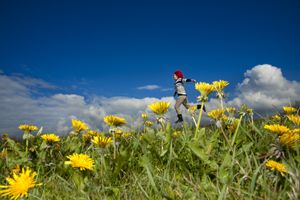ONE OF THE MOST CONFUSING CONCEPTS for photo enthusiasts is the difference between a quantitatively correct exposure and a creatively correct exposure. You might think that as long as your light meter indicates a correct exposure at a certain exposure setting, then you’re in good shape. And on one level, you’d be correct. Your light meter tells you the correct quantitative value for a properly exposed image. Technically, a correct exposure is nothing more than the quantitative value of an aperture and shutter speed working together within the confines of a specific ISO. This is the case whether you’re in Program mode, Shutter Priority mode, Aperture Priority mode, or even manual mode. However, if you blindly follow your light meter’s advice, you’re giving up creative control over your image. Maybe you want to emphasize a certain part of the composition and blur out the rest. Maybe you want to express a sense of motion. Maybe you want to capture a fun lighting effect. Maybe you want to expand your depth of field for a dramatic sense of place. The options are nearly endless if you consider the creatively correct exposure.
A creatively correct exposure is the ideal combination of aperture and shutter speed for the artistic effect you want to produce. Most picture-taking situations have at least six combinations of f-stops and shutter speeds that will yield a quantitatively correct exposure. But typically, only one or two of these combinations will give you a creatively correct exposure. This entire book is about choosing the creatively correct exposure for different shooting scenarios. In this opening section, we’ll start with the two most basic approaches to setting up a composition: storytelling exposures (deep depth of field) and single-theme exposures (shallow depth of field). You can apply many of the principles of these two exposure types to all of the other special effects you’ll learn later in the book.
16–35mm lens, f/22 for 1/250 sec., Nikon SB-900 flash
